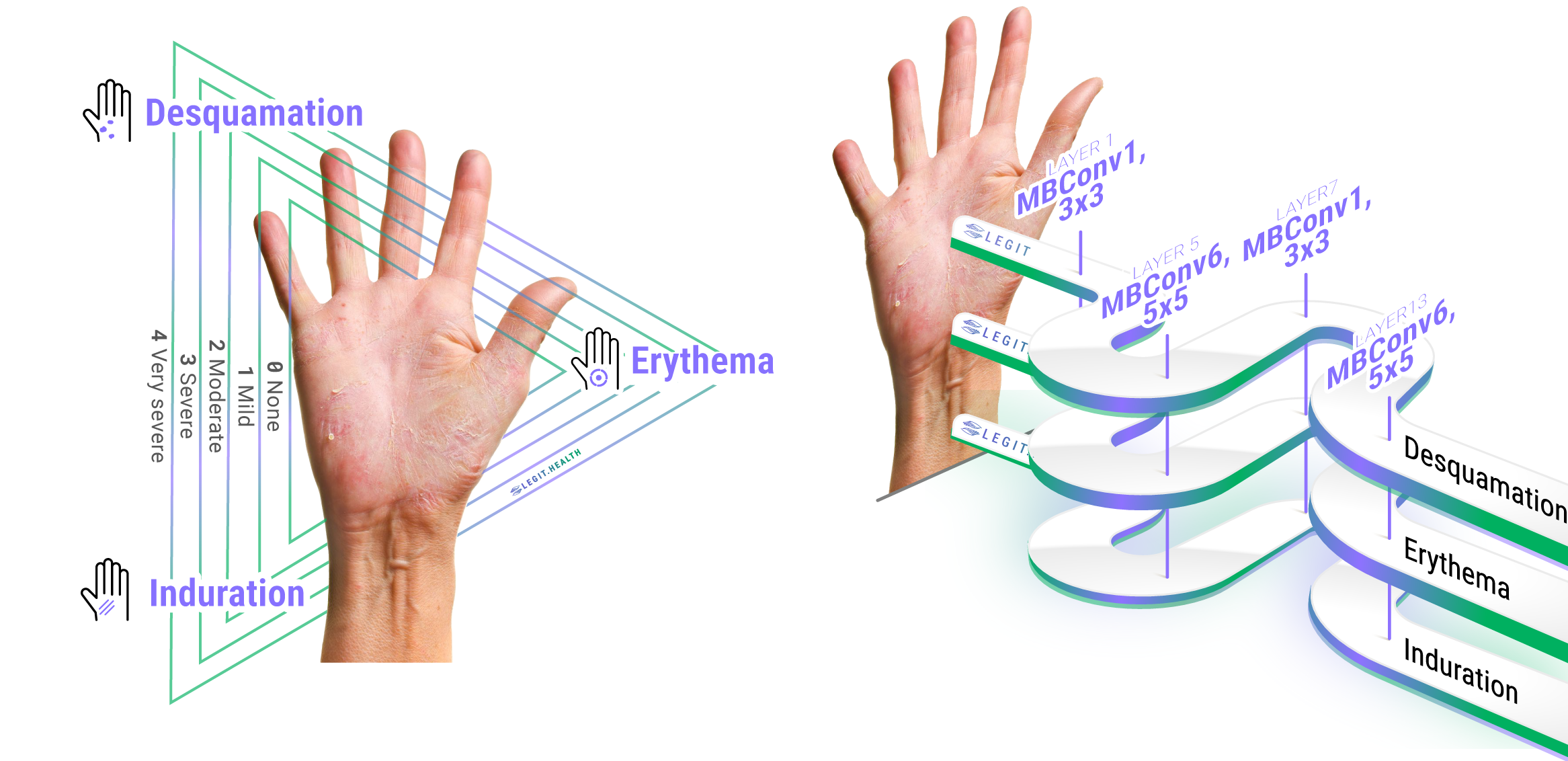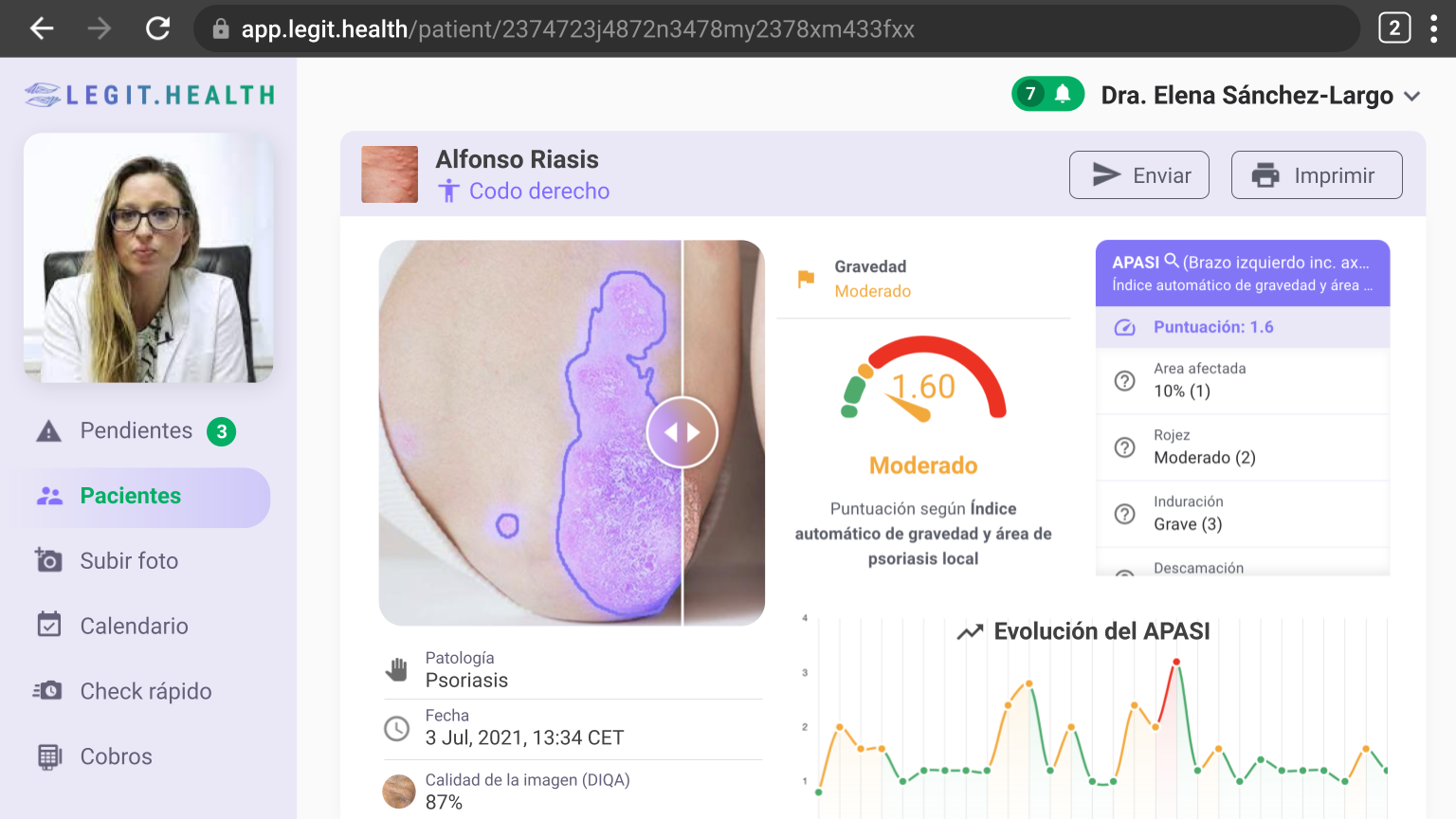What is the PASI?
What is the Psoriasis Area and Severity Index?
Psoriasis symptoms can vary considerably. Unfortunatelly, doctors don't have reliable diagnostic and activity markers for psoriasis. Therefore, psoriasis affectation can currently be measured only by the use of questionnaires, known as reported outcome measures.
The Psoriasis Area and Severity Index, also called PASI is a tool to measure how much psoriasis a patient is suffering.
The PASI is an established and widely accepted tool to prospectively measure psoriasis. It's the most used instrument to measure psoriasis, both in clinical trials and in day-to-day practice. It has been used in most clinical trials in psoriasis in recent years as the main outcome parameter.
Why is PASI score important?
Psoriasis affects around 125 million people worldwide. Indeed, between 2% and 3% of the total population have psoriasis, according to the World Psoriasis Day consortium. Psoriasis affects people's quality of life. It affects day-to-day activities and work productivity, and has negative effects on people's sleep, and emotional and psychological well-being. The burden of psoriasis on patients, their family and friends, the health care system and society is substantial.
When a doctor prescribes a treatment for a patient with psoriasis the severity of the disease is the most relevant data point to decide which is the correct treatment.
That is why doctors invented the PASI: it allows the measurement of the severity of psoriasis to prescribe the best treatment and to measure how it's working. Without a tool like the PASI, it would be very difficult to help patients and develop new treatments for patients suffering from psoriasis.
Who created the PASI?
The PASI was created by two doctors: Torsten Fredriksson and Ulf Pettersson, in 1978. It was created as an objective way to measure the effectiveness of treatments.
The scientific publication that gave birth to the PASI did not focus on the scoring system itself. It was simply a means to measure if a specific treatment worked effectively.
Does the PASI work?
Although the PASI is still the most used tool to measure psoriasis, it has been well established that it's far from perfect. Many researchers have demonstrated its profound limitations.
A study published in 2004, called Psoriasis Area Severity Index (PASI) and the Dermatology Life Quality Index (DLQI): the correlation between disease-severity and psychological burden in patients treated with biological therapies, stated that:
the correlation between the most widely used clinical trial efficacy endpoint, the physician-rendered Psoriasis Area Severity Index PASI score, and the most widely used quality of life metric, the Dermatology Life Quality Index DLQI, is not always high.
However, the most famous and widely criticized limitation of the PASI score is that it is insufficient to measure areas lower than 10% of a body region.
That was the conclusion of a 2014 study called A pilot study on the Psoriasis Area and Severity Index (PASI) for small areas: Presentation and implications of the Low PASI score. Journal of Dermatological Treatment:
A minimal involvement (lower than 10% of the body area involved) will always lead, according to the classic PASI six-point area scale classification, to an affected area of 1.
Is there a better alternative to PASI?
In 2019, a multidisciplinary team of scientists from several countries developed the Automatic Psoriasis Area and Severity Index, also called APASI. The APASI automatically measures how much psoriasis a patient suffers from by analyzing a photo of the patient.
The main advantage of the APASI is speed. The APASI requires only 23 seconds, while the manual PASI requires between six and 10 minutes. The reality is that many doctors do not fill in any scoring system because they find it too slow and tedious, preferring to make an "eyeball" estimate of the severity of the disease.
Another advantage of APASI is the reduction in inter-observer variability. The APASI outperforms traditional methods, achieving a margin of error below 13%, much lower than the usual 20% observed in traditional manual PASI.
What is Automatic PASI (APASI)?
The APASI is the automatic version of the PASI. Through the use of Artificial Intelligence, the APASI automatically calculates the PASI score.
The main objective of APASI (or Automatic PASI) is to provide a tool to accurately and consistently measure the severity of psoriasis during routine evaluations and clinical studies.
The APASI system represents the future of dermatology. It allows clinicians to benefit from the best tool for diagnosing and measuring the severity of psoriasis.

In essence, the APASI allows health care providers to practice evidence-based medicine and improves communication between doctor and patient.

Using Artificial Intelligence, APASI processes smartphone images and automatically translates them into the domain of the PASI.